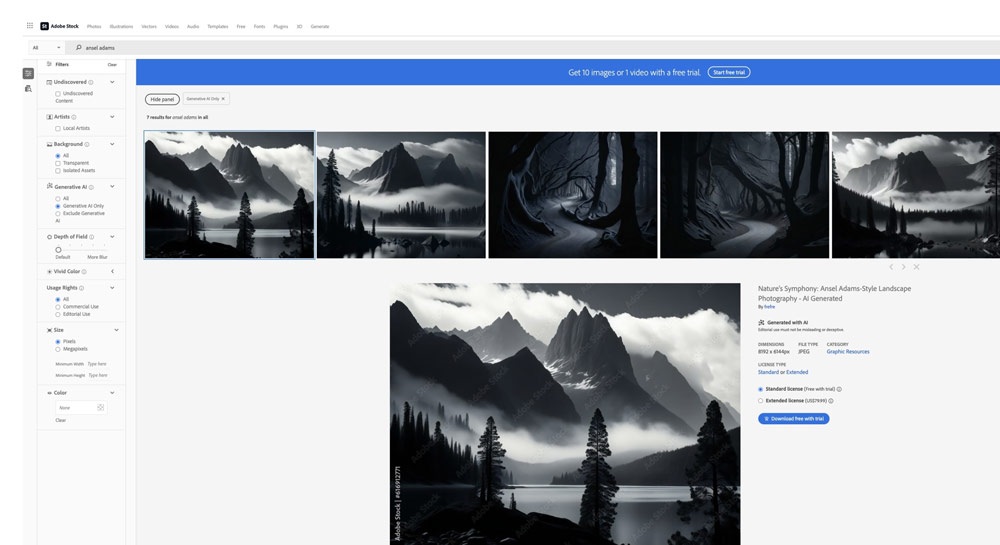AI is becoming rather mixed blessing for Adobe. On the one hand, the company is attracting a lot of interest as it expands its photo-editing tools and integrates more AI features into Photoshop and Lightroom. On the other hand, while we are not exactly seeing a backlash, there is certainly some grumbling.
They say no publicity is bad publicity, but this doesn’t seem to be entirely the case here. Adobe is also being accused in some quarters of not doing enough to protect images from ending up as fodder for its Generative Fill tools – ‘who said you could use my picture of a dog to generate AI dog content which you can then sell on!’ go the complaints, etc, etc.
Recently we reported how the Ansel Adams Estate was up in arms about imagery in the style of the landscape great appearing in the Adobe Stock picture library, resulting in Adobe having to remove the imagery and eat humble pie (it had apparently been alerted several times).

AI: whose picture is it anyway?
The latest row concerns allegedly vague language in the Terms and Conditions which subscribers need to agree to in order to be able to access Creative Cloud and its constituent programs, including Photoshop, Lightroom and many more tools which are widely used by the creative community.
Fears were voiced that the new Ts and Cs were giving Adobe carte blanche to use Creative Cloud subscribers’ imagery in its generative AI models, without the original creator being consulted or compensated.
Adobe has now clarified the terms of use, rolling out some big guns to explain – namely Scott Belsky, head of product, and Dana Rao, Vice President of legal and policy (a senior member of the software giant’s legal team, in other words).

‘We recently rolled out a re-acceptance of our Terms of Use which has led to concerns about what these terms are and what they mean to our customers,’ the duo said in a statement. ‘This has caused us to reflect on the language we use in our Terms, and the opportunity we have to be clearer and address the concerns raised by the community.’ See below for more.
Adobe sets the record straight in two key areas
- ‘You own your content. Your content is yours and will never be used to train any generative AI tool. We will make it clear in the license grant section that any license granted to Adobe to operate its services will not supersede your ownership rights.’
- ‘We don’t train generative AI on customer content. We are adding this statement to our Terms of Use to reassure people that is a legal obligation on Adobe. Adobe Firefly is only trained on a dataset of licensed content with permission, such as Adobe Stock, and public domain content where copyright has expired.’
You can read the full statement here. In the meantime, it’s likely that Adobe will be doubling down on efforts to make it clearer to Creative Cloud subscribers how their content will be used, as well as paying closer attention to what kind of AI-generated imagery turns up on Adobe Stock.
The company is also working on an agreed industry standard to identify wholly or partially AI-generated images, something like the nutrition labels you see on food.
Further reading
With Generative Fill, Adobe Photoshop takes AI to a whole new level







